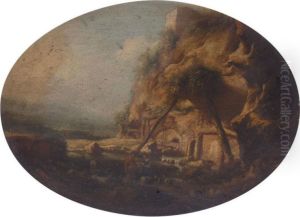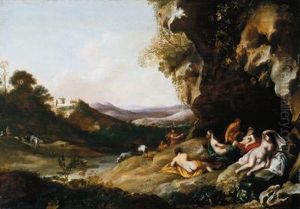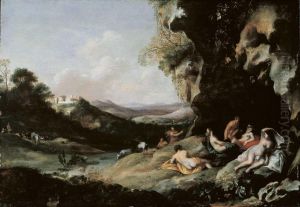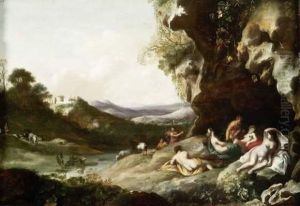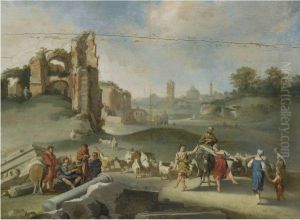Jan Linsen Paintings
Jan Linsen was a Dutch Golden Age painter, primarily known for his genre and historical scenes, as well as for his skillful portraits. Born in 1623 in Heusden, in the Northern Netherlands, Linsen's artistic journey began in his early years, as he demonstrated a profound interest in painting and the arts. Little is known about his early training, but like many artists of his time, it is likely he apprenticed under a master painter to hone his craft.
During his career, Linsen was influenced by the prevailing Baroque style, which was characterized by dramatic expression, rich coloration, and a dynamic composition. He was particularly adept at capturing the interplay of light and shadow, a technique known as chiaroscuro, which was a hallmark of Baroque painting. His works often depicted scenes from the Bible, classical mythology, and everyday life. These paintings were well-received for their narrative quality and for the lifelike representation of figures.
Despite his talent, Jan Linsen did not achieve the same level of fame as some of his contemporaries, such as Rembrandt or Vermeer. However, his contributions to the Dutch Golden Age of painting have been recognized by art historians, and his works are appreciated for their technical skill and emotional depth. Linsen's artwork provides a window into the cultural and societal interests of the 17th century in the Netherlands.
Tragically, Jan Linsen's life was cut short when he died in 1660, at the age of 37. The cause of his early death is not well documented, which is not uncommon for artists of his era. Despite the brevity of his career, Linsen left behind a body of work that continues to be studied and admired for its artistry and historical value. His paintings can be found in various museums and collections, where they are preserved as examples of the rich artistic heritage of the Dutch Golden Age.
